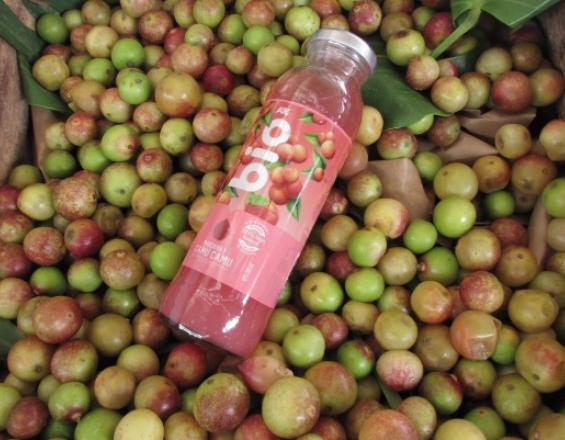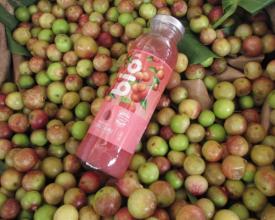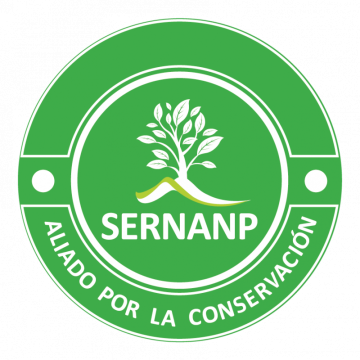
Protecting the Amazon by driving the Natural Revolution through forest fruit harvesting

AJE Group was born as a small family business in Ayacucho, Peru and today is one of the largest Peruvian corporations with operations in 11 countries and a success that employs more than 10,000 families. AJE manufactures and markets a wide variety of beverages, including beers, soft drinks, energy drinks, isotonic drinks, waters, juices and teas. Within the model, the conservation of biodiversity or "green gold" for the benefit of the communities is a central focus, reinforcing the protection of the forest as an intrinsic part of the harvesting of the fruits that make up the company's various products.
"It is important to promote a market economy through what the inhabitants of the territory know how to do: protect the forest and harvest the fruits."
Contexte
Défis à relever
Environmentally:
- Protect the huge area of influence of the project; They are 5 million hectares under protection, this surface represents 3.5 billion tons of carbon, which if they go into the atmosphere would be 11,500 million tons of CO2.
Socially:
- Empower communities to be the ones to lead conservation.
- Generate a change of pattern in consumers to encourage responsible consumption that opts for products that support conservation, making the project viable.
Economically:
- Break with the current economic paradigm and demonstrate to the world that the economic development of the Amazon passes through the preservation of its forests, that it is economically much more profitable the standing forest than the logged one.
Others:
- One of the main challenges faced by the project was the change in government instruments; to promote a new institutional architecture that would allow us to operate the "forest fruit harvesting" project under a legal and institutional framework.
Emplacement
Traiter
Résumé du processus
The project seeks to empower the communities, providing them with tools for the responsible management of their resources. Part of the approach is also to facilitate the development of sustainable businesses from them, with the possibility of forming cooperatives so that they can jointly market their products. This ensures fair wages and removes the incentive for other forms of forest exploitation that can be destructive.
The training and tools provided are focused on good practices and management plans that allow and motivate forest conservation. The communities are at the center of forest protection and conservation, and by valuing their products we also seek to value where they come from.
Blocs de construction
Community empowerment
The communities that inhabit the reserve should lead the protection and conservation of the forest while at the same time improving people's quality of life.
The project seeks to empower the communities, providing them with tools for the responsible management of their resources. Part of the focus is also to facilitate the development of sustainable businesses from them, with the possibility of forming cooperatives so that they can market their products together.
The training and tools provided are focused on good practices and management plans that allow and encourage forest conservation.
Facteurs favorables
- Pay fair prices to generate income that will prevent their migration and allow them to protect the forest.
- To have a constant market for the products (to boost supply-demand).
- Ensure that fruit harvesting is sufficient and constant to meet the company's demand.
- Train producers in good practices and conservation.
- Adequate management plans
- Ensure that the supply chain is sustainable.
Leçon apprise
- It is necessary to be permanently close to the communities.
- Have a lot of patience. Projects take time.
- Do not generate expectations that cannot be fulfilled.
- It is a long-term project.
- It is important to diversify the offer with parallel projects, in this case, other than forest fruit gathering. For this reason, we are developing other options, for example, the "turtle egg collection" where turtles are protected and released into the rivers for their reproduction and growth. We have managed to release 6,000 turtles into the river.
Biodiversity protection
To conserve one of the most biodiverse sites in the world and contribute to the increase of populations of bird, fish, mammal, etc. species.
Facteurs favorables
-
Institutional support and commitment - public agencies.
-
Protected areas service committed and functioning.
-
Communities convinced of the benefits of conservation.
-
Continuous field support through allies, such as civil organizations and governmental institutions.
Leçon apprise
- To implement a successful measure that aims to protect and conserve the territory, it is important to give a value to the territory. In this case, the ideal formula was found by giving value to the fruits of the forest. This measure has allowed the inhabitants of the forest to care for and prevent deforestation in the area. In addition, it has helped foster the local economy and improve people's quality of life by providing them with an option for development and growth.
- A comprehensive vision of land management is needed. To implement a project of this type and ensure its success, it is desirable that those who design it understand that everything in nature is interconnected.
- It would be desirable that all companies in the world become models of circular economy and thus avoid millions of carbon emissions.
- Alliances with different institutions and organizations strengthen the project.
Impacts
Environmentally:
- Slowing deforestation in the Amazon, which currently stands at a rate of 17% .
- Promoting the Natural Revolution at a global level and protecting the Amazon. In the territory where the project works, 6.5 million hectares are protected:
- 6.5 million hectares
- More than 700 bird species
- More species of fish than in the Atlantic Ocean
- 74 species of mammals
- 40% of Peru's carbon reserves (3.5 billion tons).
- Developing a strict selection process to purchase only fruit from protected areas.
Socially:
- Working directly with communities, ensuring they have stable income and fair payments.
- Implementing training and accompaniment programs.
- Developing management plans in conjunction with the communities.
Economically:
- By combating middlemen and buying directly from producers.
- Promoting sustainable industry through pulping plants owned by micro-entrepreneurs.
Bénéficiaires
Environmentally:
- CO2 Capture
- Conservation of the Amazon,
- 700 species of birds
- 120 species of fish
- 70 species of mammals
Socially:
- Works with 12 communities, more than 900 families.
- Supports the development of sustainable businesses.
Histoire
The beginning of AJE is very different from the rest of the companies. Its owners grew up in the countryside and had contact with nature and Peruvian biodiversity from an early age. AJE eventually became a multinational company and expanded around the world, developing more and more of its categories. However, it had always been the dream of its founders to promote the country's biodiversity.
The company has focused its efforts on protecting Amazonian biodiversity and supporting the new Natural Revolution through super fruits to promote sustainable economy, conservation and improvement of the quality of life of Amazonian communities. The Project's vision is to "value the fruits of the Amazon forest by empowering its guardians and raising their standard of living through the conservation of their territory".
To achieve this, the company has worked hand in hand with various institutions and NGOs.
" One of the characteristics of the industrial revolution is competitiveness, but when it comes to sustainability one cannot compete, one has to work as a team".
On the one hand, hand in hand with Minam, we facilitate the implementation of management plans with the communities, as well as with the Natural Service of Protected Natural Areas (Sernanp), to enhance the value of natural reserves and protect the communities who are their guardians.
We also work with the NGO Naturaleza y Cultura Internacional in Pacaya Samiria and Pucacuro. They train the communities and provide them with the necessary support so that they can set up their own businesses. Training is also directed towards the development of good tree management practices so that the harvesting of fruit is safe and respectful.
Finally, with the Regional Government of Loreto and the Regional Government of Ucayali, we are working to improve the collection of palm fruit and camu camu harvesting, respectively.
"The vision for the future is to invite more companies in the world to join in promoting circular economy models, thus understanding that with these actions we can avoid millions of carbon emissions, protect the territory and improve people's quality of life."



